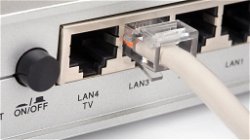UDP: Unleashing Speed and Efficiency in Real-Time Communication
Vihaan Disouza
. 3 min read
User Datagram Protocol (UDP) is a transport layer protocol in computer networking, commonly used in programming. It is one of the core members of the Internet Protocol Suite and works alongside Transmission Control Protocol (TCP). UDP is a connectionless and unreliable protocol, meaning it does not establish a dedicated connection before data transmission and does not guarantee the delivery of data. Despite its lack of reliability, UDP's simplicity and speed make it a popular choice for real-time programming applications such as video streaming, VoIP, and online gaming.
.jpg)
Some Key Features of the User Datagram Protocol
- Connectionless Communication: Unlike TCP, which requires a three-way handshake to establish a connection before data transfer, UDP does not have any connection setup phase. It simply sends data packets (datagrams) to the destination without checking if the receiver is ready or available.
- Unreliable Delivery: UDP does not provide any mechanisms for ensuring the reliable delivery of data. Once a packet is sent, there is no acknowledgment or retransmission if it gets lost or corrupted. This makes UDP faster than TCP in some cases, as there is less overhead for error handling and flow control.
- Low Overhead: Since UDP lacks the complexities of connection establishment and error recovery, it has lower overhead and can be more efficient for certain types of applications. It is commonly used in real-time applications like video streaming, VoIP (Voice over Internet Protocol), and online gaming, where timely delivery of data is more critical than ensuring the arrival of every packet.
- Packet Structure: A UDP packet consists of a header and payload. The header typically contains the source and destination port numbers (16 bits each) and the length of the packet. UDP does not have a built-in mechanism for flow control or congestion avoidance, which can lead to potential issues in high-traffic scenarios.
- No Sequence Control: UDP packets may arrive out of order at the destination, and the protocol does not have any built-in mechanisms for reordering them. It is up to the application layer to handle this, if necessary.
- Broadcasts and Multicasts: UDP supports broadcasting, allowing a single packet to be sent to all devices on the same network. It also supports multicasting, enabling the transmission of data to a specific group of devices.
UDP is often chosen for applications where speed and efficiency are more critical than data reliability. For example, in online gaming, the immediate transmission of player movements and actions is vital, and a missed packet occasionally is less problematic than the added latency that might come with TCP's reliability mechanisms.
Benefits of User Data Protocol
User Datagram Protocol (UDP) offers several benefits and advantages for certain types of applications and scenarios. Here are some of the key benefits of UDP:
- Low Overhead: UDP has minimal protocol overhead since it doesn't include error checking, flow control, or retransmission mechanisms. This simplicity results in lower latency and reduced processing load on both the sender and receiver.
- Faster Transmission: Due to its lightweight nature, UDP is faster compared to other protocols like TCP (Transmission Control Protocol). This makes it suitable for real-time applications like video streaming, online gaming, and VoIP (Voice over Internet Protocol).
- Connectionless: UDP is connectionless, which means it doesn't require a formal handshake process before data exchange. This eliminates the setup and teardown overhead present in connection-oriented protocols like TCP.
- Broadcast and Multicast Support: UDP supports broadcast and multicast transmission, allowing data to be sent to multiple recipients simultaneously, which can be beneficial for multimedia streaming and online conferencing.
- Simple Implementation: Implementing UDP is generally easier and requires less memory and processing resources than TCP. This makes it a preferred choice for embedded systems and applications with limited resources.
- Use in Unreliable Networks: UDP is commonly used in unreliable or lossy network environments, as it doesn't involve retransmission of lost packets. Applications that can tolerate some data loss, such as real-time video streaming or online gaming, benefit from UDP's simplicity in such situations.
- Load Balancing: In some cases, UDP can be useful for load balancing in server clusters. Since UDP doesn't maintain connection state, each packet can be handled independently by different servers in the cluster.
- DNS (Domain Name System): UDP is used for DNS queries, where quick resolution of domain names is crucial, and the potential loss of a DNS packet is not considered as critical as a dropped TCP connection.
Despite its advantages, it's essential to be aware of UDP's drawbacks. The lack of error checking and retransmission mechanisms means that UDP does not guarantee reliable data delivery. Applications using UDP must handle data loss and packet ordering on their own if needed. For scenarios where data integrity and guaranteed delivery are essential, TCP may be a better choice.
Conclusion
However, in scenarios where data integrity is paramount, such as file transfers or critical data exchange, TCP is preferred due to its reliable, connection-oriented nature. It's important to note that while UDP itself does not ensure reliable data delivery, the application layer can implement its own mechanisms for data validation, error handling, and retransmission if required.
More Stories from
How to Monitor Your Search Engine Rankings and Why it Matters?
Monitoring search engine rankings.
Chrome add-ons that are Excellent for Search Engine Optimization
SEO tools for Chrome extension.
Fortifying Digital Assets: Ensuring Robust IP Security in a Connected World
It highlights the value of safeguarding intellectual property from external and internal threats, emphasizing the preservation of innovation and competitive advantage.
Decoding the DNS: Enabling Seamless Internet Connectivity
The Domain Name Service (DNS) is a vital system that translates user-friendly domain names into machine-readable IP addresses, enabling seamless internet connectivity.
LAN Event Generator: Powering the Next Generation of Local Area Network Gatherings
Discover the game-changing impact of the LAN Event Generator, a sophisticated software application designed to streamline the organization of LAN events.









.png?width=40&aspect_ratio=1:1)


.png?width=40&aspect_ratio=1:1)